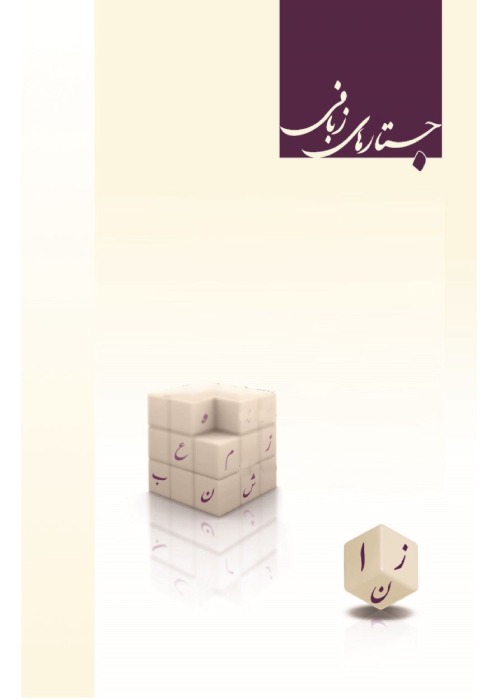Kinship Terms and Terms of Address in Nænæji Dialect
In this article, which is a descriptive – analytical research, and the first research done about Nænæji dialect, the use of kinship terms and terms of address in this dialect is studied. This dialect is spoken in village of Nænæj, in Malayer County, Iran. Nænæji can be considered as a variety of Persian being influenced by Lori, Laki, and Kurdish languages. In “introduction”, some basic points about the research and its goals are presented; then the village of Nænæj is briefly introduced; and finally the main questions of the research are presented as: Concerning age degree of the informants, what kinds of changes can be seen in use of kinship terms and terms of address in Nænæji dialect, in recent decades? What are the causes of change in kinship terms and terms of address of Nænæji dialect? The data, gathered in a field work and through network participation in the language community, are analyzed in four separate categories: kinship terms coming from consanguinity, kinship terms coming from affinity, kinship terms coming from RAḌᾹ and brotherhood formula (based on Islamic jurisprudence or Fiqh), and address terms for nonrelatives. Data have been analyzed through using concepts and terms of George Peter Murdock and Lewis Henry Morgan. In other words, partly, this research is based on what Murdock and Morgan have said about kinship terms in different languages of the worlds. In “review of the literature”, a number of researches done about the use of kinship terms in different Iranian languages, namely Persian, Kurdish and Gilaki, are reviewed, to show that the present research can complete the researches done in this field. This research reveals, among the rest, that Nænæji has a rich array of kinship terms and terms of address. Also, analysis of Nænæji kinship terms coming from consanguinity, Nænæji kinship terms coming from affinity, Nænæji kinship terms coming from RAḌᾹ, and Nænæji address terms for nonrelatives, shows that in using all of them we see deep changes in recent decades; in a way that decrease in variety of kinship terms and address terms of the dialect is something clear. In fact, in recent decades, Nænæji kinship terms have moved towards missing distinctions based on age, disappearance of derivative and descriptive terms, and accepting standard Persian’s norms and terms. The research also reveals that today in Nænæji, the use of some of the kinship terms and terms of address is restricted to middle and old age groups. It also indicates that change in community relationships and family structure, migration and urbanization are the causes of Nænæji kinship terms and terms of address become obsolete and even extinct; and the standard Persian equivalent substitute them. This is a clear example of dialect levelling in Iran.
- حق عضویت دریافتی صرف حمایت از نشریات عضو و نگهداری، تکمیل و توسعه مگیران میشود.
- پرداخت حق اشتراک و دانلود مقالات اجازه بازنشر آن در سایر رسانههای چاپی و دیجیتال را به کاربر نمیدهد.


